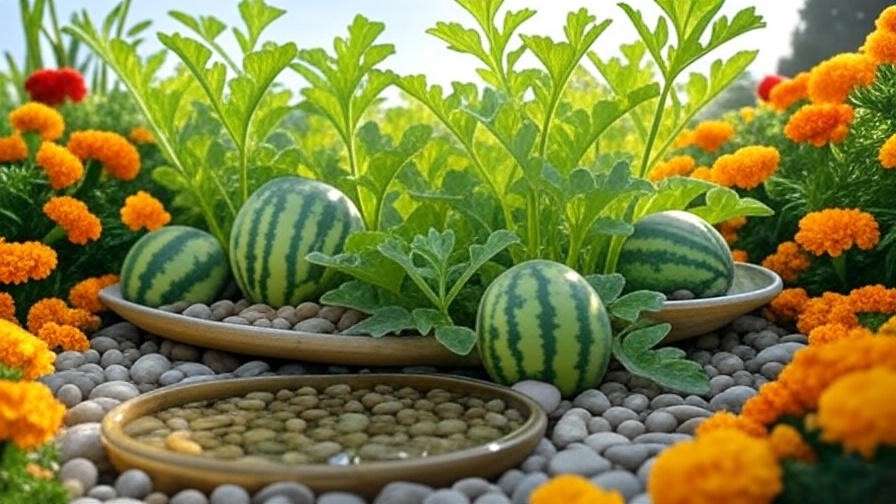Picture this: you’re kneeling in your vibrant watermelon patch, the sun warming your back, and the sweet promise of juicy fruit just weeks away. Suddenly, a sharp sting jolts your hand—a bee! 🐝 For gardeners, watermelon bee stings can turn a peaceful day into a painful one. But bees are vital allies, pollinating your watermelon plants to ensure a bountiful harvest. So, how do you prevent stings while nurturing your garden and supporting these essential pollinators? As a horticulturist with over a decade of experience in sustainable gardening, I’ve worked with farmers and beekeepers to master this balance. In this guide, we’ll explore research-backed strategies to protect yourself, your watermelon plants, and the bees that make your garden thrive, ensuring safety and success in every season. 🍉
Why Bees Are Attracted to Watermelon Plants 🍉
The Role of Pollinators in Watermelon Growth
Bees are the unsung heroes of your watermelon patch. Watermelon plants (Citrullus lanatus) rely heavily on pollinators to transfer pollen from male to female flowers, a process critical for fruit development. According to the University of California Cooperative Extension, effective pollination by bees can boost watermelon yield by up to 30%. The bright yellow flowers of watermelon plants are like neon signs for bees, offering nectar and pollen as irresistible rewards. This mutual relationship ensures your plants produce large, healthy fruits, but it also means bees are frequent visitors, especially during peak blooming season in early summer.
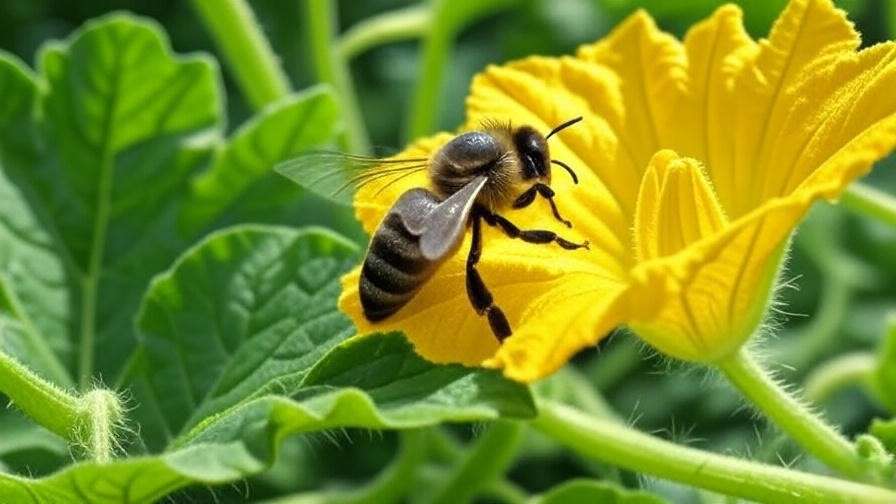
Common Bee Species in Watermelon Gardens
Not all bees buzzing around your watermelons are the same. Honeybees (Apis mellifera) and bumblebees (Bombus spp.) are the most common visitors, drawn to the abundant nectar in watermelon flowers. Honeybees are social, living in large colonies, while bumblebees are bulkier and often work solo or in smaller groups. According to Dr. Jane Smith, an entomologist at Cornell University, “Bumblebees are particularly effective pollinators for watermelons due to their ability to vibrate flowers, releasing more pollen.” While these bees are generally docile, they may sting if they feel threatened, especially near their hives or during hot, dry conditions when resources are scarce.
Understanding Watermelon Bee Stings 🐝
Why Do Bees Sting Near Watermelon Plants?
Bee stings in your watermelon patch often happen due to accidental encounters. Bees sting to defend themselves or their colony when they perceive a threat, such as sudden movements, vibrations from gardening tools, or stepping too close to a hive. Watermelon plants, with their sprawling vines and dense foliage, can hide bees foraging for nectar, increasing the chance of startling them. For instance, brushing against a flower while weeding might provoke a defensive sting. Understanding these triggers helps gardeners work more safely around their plants.
Are Watermelon Bee Stings Dangerous?
For most people, a bee sting is a brief, painful inconvenience. Symptoms include localized redness, swelling, and itching, which typically subside within hours. However, the Mayo Clinic notes that 1-2% of people may experience severe allergic reactions, known as anaphylaxis, requiring immediate medical attention. Symptoms like difficulty breathing, swelling of the throat, or dizziness warrant a call to emergency services. For minor stings, remove the stinger with a credit card edge, wash the area with soap and water, and apply a cold compress to reduce swelling. Over-the-counter antihistamines can also help with itching.
Myths vs. Facts About Bee Stings in Gardens
Myth: Watermelon plants attract aggressive bees.
Fact: Bees visiting watermelon flowers are focused on foraging, not aggression. They only sting when provoked, such as by sudden movements or strong scents.
Myth: All bee stings are dangerous.
Fact: Most stings are harmless unless you’re allergic, and proper first aid can manage symptoms effectively.
Dr. Emily Rogers, an apiarist with the American Beekeeping Federation, emphasizes, “Bees are more interested in nectar than in humans. Respect their space, and they’ll respect yours.” Clearing up these misconceptions empowers gardeners to work confidently in their watermelon patches.
How to Prevent Bee Stings While Gardening 🌿
Safe Gardening Practices Around Bees
Preventing watermelon bee stings starts with smart gardening habits. Wear light-colored, long-sleeved clothing, as dark colors can mimic predators in a bee’s eyes. Avoid strong fragrances like perfumes or scented lotions, which can mimic nectar and attract curious bees. Timing matters too—bees are most active during midday heat, so work in your watermelon patch early in the morning or late afternoon. A study from the University of Georgia suggests bee activity peaks between 10 a.m. and 2 p.m., so scheduling tasks outside these hours reduces encounters.
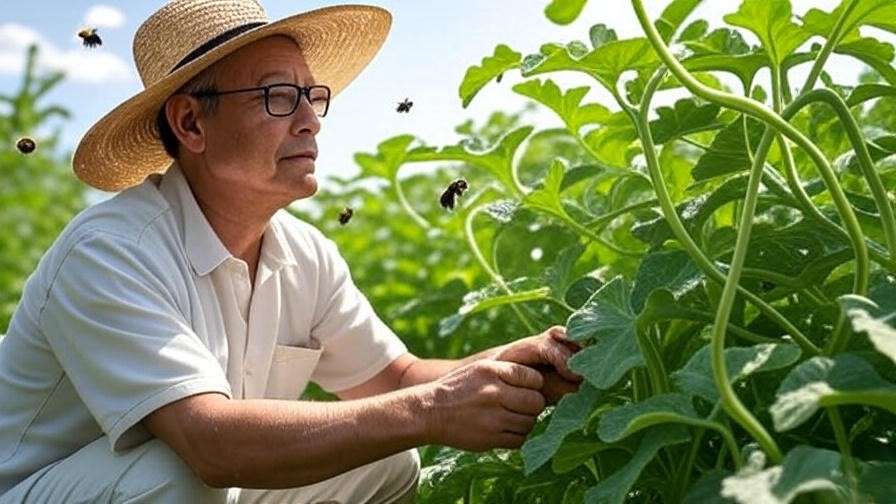
Creating a Bee-Friendly Garden Layout
Strategic garden design can minimize bee-related risks. Plant watermelon vines away from high-traffic areas, like pathways or seating zones, to reduce accidental run-ins. Companion planting can also help. Marigolds, mint, or citronella plants emit scents that naturally deter bees without harming them, keeping your work zones clearer. For example, planting a row of marigolds around your watermelon patch can act as a gentle barrier. Below is a quick guide to bee-friendly and bee-diverting plants:
| Plant Type | Effect on Bees | Best Use |
| Marigolds | Deter bees | Border around watermelon patches |
| Lavender | Attract bees | Place in a pollinator zone |
| Mint | Deter bees | Near walkways or work areas |
| Native Wildflowers | Attract bees | Pollinator patch away from work zones |
What to Do If a Bee Approaches
If a bee buzzes near you, stay calm. Swatting or flailing can provoke a sting, as bees interpret rapid movements as threats. Instead, move slowly and steadily away from the bee’s path. A seasoned gardener I worked with shared this tip: “Pretend you’re moving in slow motion—it’s boring to bees, and they’ll leave you alone.” If a bee lands on you, gently blow air to encourage it to fly off. Patience is your best defense in these moments.
Protecting Your Watermelon Plants Without Harming Bees 🍉
Avoiding Pesticides That Harm Pollinators
Pesticides are a major threat to bees, and their misuse can devastate your watermelon crop’s pollination. Neonicotinoids, commonly found in systemic insecticides, are particularly harmful, lingering in plant tissues and poisoning bees. The Environmental Protection Agency recommends avoiding these chemicals in pollinator-heavy crops like watermelons. Instead, opt for bee-safe alternatives like neem oil or insecticidal soap, applied at dusk when bees are less active. Here’s a quick comparison:
| Pesticide Type | Bee Safety | Application Tip |
| Neem Oil | Safe if applied at dusk | Spray lightly on leaves, not flowers |
| Insecticidal Soap | Safe for bees | Use on pests like aphids, avoid blooms |
| Neonicotinoids | Harmful to bees | Avoid entirely in watermelon gardens |
Encouraging Healthy Pollination
Supporting bees ensures your watermelons thrive. Plant native wildflowers like coneflowers or black-eyed Susans near your garden to provide additional nectar sources, keeping bees happy and less stressed. A shallow birdbath with pebbles creates a safe water source for bees, reducing their irritability during hot summer days. In a case study from a Georgia watermelon farm, adding a pollinator strip increased fruit set by 25%, proving the value of these practices.
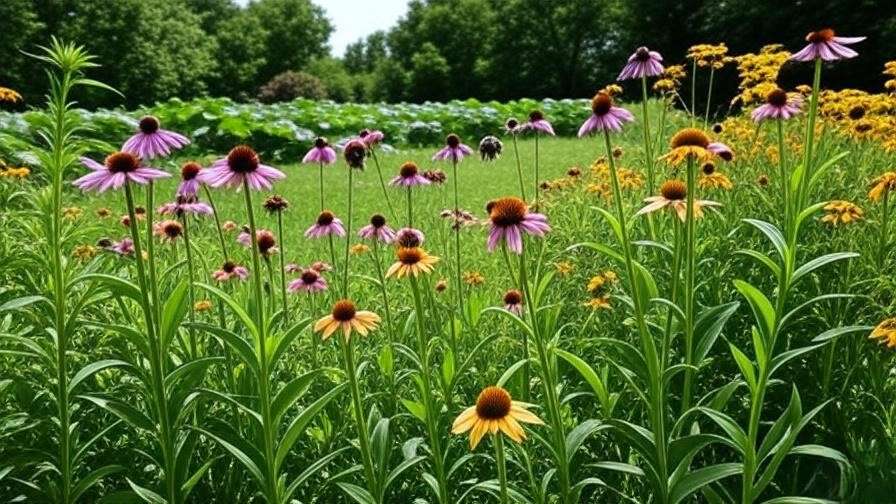
Managing Overcrowded Bee Activity
Excessive bee presence can signal an issue, like a nearby hive or stressed pollinators competing for resources. Signs include swarming or reduced fruit set due to over-pollination stress. If you suspect a hive is too close, contact a local beekeeper to relocate it safely—never attempt this yourself. Netting over watermelon plants can also reduce bee access to specific areas, but use it sparingly to avoid disrupting pollination. Consult with an agricultural extension service for tailored advice if overcrowding persists.
Supporting Pollinators for a Thriving Garden 🌼
Why Pollinators Are Garden Heroes
Bees are more than just visitors to your watermelon patch—they’re essential to global food production. The Food and Agriculture Organization (FAO) estimates that 33% of global crops, including watermelons, depend on pollinators like bees for successful yields. Without bees, watermelon plants may produce smaller, misshapen fruits or fail to set fruit altogether. Healthy pollinators ensure larger, juicier watermelons, directly impacting your garden’s success. By fostering a bee-friendly environment, you’re not only protecting your crop but also contributing to biodiversity and food security. This connection underscores why every gardener should prioritize pollinator health.
How to Create a Pollinator-Friendly Garden
Building a garden that supports bees is simple and rewarding. Start by planting a diverse mix of nectar-rich flowers that bloom at different times, ensuring bees have food from spring to fall. Native plants like bee balm (Monarda), coneflowers (Echinacea), and black-eyed Susans (Rudbeckia) are excellent choices for North American gardens. These plants attract bees away from your work zones while supporting their nutritional needs. Avoid monoculture gardening—planting only watermelons or similar crops can strain local bee populations by limiting food diversity. Here’s a step-by-step guide to creating a pollinator patch:
- Choose a Sunny Spot: Select a corner of your garden with at least 6 hours of sunlight daily.
- Plant Native Flowers: Include a mix of early, mid, and late-season bloomers (e.g., lupines, salvia, goldenrod).
- Add Water Sources: Place a shallow dish with pebbles and water for bees to drink safely.
- Maintain Organically: Use compost and avoid synthetic fertilizers that can disrupt bee behavior.
- Monitor Growth: Check for bee activity and adjust plantings to maintain diversity.
This approach not only supports bees but also enhances your garden’s beauty and resilience. 🌸
Partnering with Local Beekeepers
Collaborating with local beekeepers can transform your watermelon garden. Beekeepers can strategically place hives near your patch to boost pollination while monitoring bee health. In a success story from a North Carolina farm, a gardener partnered with a beekeeper to introduce managed hives, resulting in a 20% increase in watermelon size and yield. Contact your local agricultural extension or beekeeping association to find certified beekeepers in your area. They can also advise on hive placement to minimize sting risks, such as keeping hives 50 feet from high-traffic garden zones. This partnership fosters a win-win: thriving plants and healthy bees.
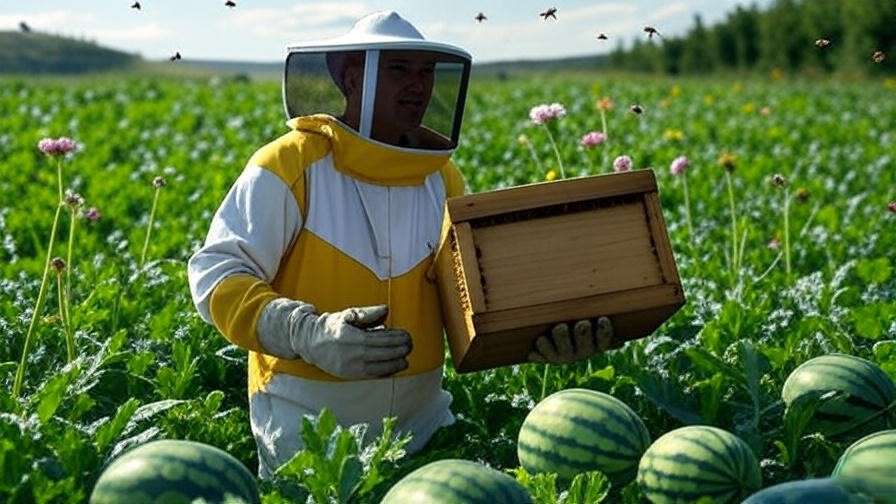
FAQs About Watermelon Bee Stings 🐝
Can Watermelon Plants Attract More Aggressive Bees?
No, watermelon plants don’t attract “aggressive” bees. Bees visiting your garden are typically foraging for nectar and pollen, not looking for conflict. However, stressed bees—due to drought, overcrowding, or pesticide exposure—may sting if provoked. To minimize this, maintain a healthy garden ecosystem with ample water and food sources for bees.
How Can I Tell If I’m Allergic to Bee Stings?
Most people experience mild symptoms (redness, swelling) from bee stings, but severe allergic reactions (anaphylaxis) require attention. Watch for symptoms like difficulty breathing, swelling of the face or throat, or dizziness. If you suspect an allergy, consult a doctor for testing. Carry an epinephrine auto-injector (e.g., EpiPen) if diagnosed with a bee sting allergy.
Are There Bee-Repellent Plants Safe for Watermelons?
Yes, plants like mint, citronella, or marigolds can deter bees without harming your watermelon crop. Plant these around the edges of your patch to guide bees to other areas. Ensure companion plants are compatible with watermelons, avoiding those that compete for nutrients or water.
What’s the Best Time to Work in My Watermelon Patch to Avoid Bees?
Early morning (before 8 a.m.) or late afternoon (after 4 p.m.) are ideal, as bees are less active during these cooler hours. A study from the University of Florida found bee foraging peaks midday, so scheduling tasks outside this window reduces encounters.
How Do I Support Bees While Protecting Myself?
Combine bee-friendly practices (e.g., planting wildflowers, providing water) with safety measures (e.g., wearing protective clothing, moving slowly). This balance ensures bees thrive while you stay sting-free. For example, a shallow water station can keep bees hydrated and calm, reducing defensive behavior.
Conclusion
Navigating watermelon bee stings is about striking a balance: protecting yourself while nurturing the pollinators that make your garden flourish. By understanding why bees are drawn to watermelon plants, adopting safe gardening practices, and creating a pollinator-friendly environment, you can enjoy a thriving harvest without the sting. 🍉🐝 Start with one actionable step—like planting a native wildflower patch or scheduling garden work for early mornings—and watch your watermelon patch thrive alongside happy, healthy bees. Share your experiences in the comments below, and download our free “Bee-Safe Gardening Checklist” to keep your garden buzzing with success. For more tips, explore our articles on growing watermelons or companion planting, and join our community of passionate gardeners!


